
Boris M. Kiselev, MD, discusses the essential role of psycho-oncology in addressing patient distress, improving treatment adherence, and supporting long-term survivorship.

Your AI-Trained Oncology Knowledge Connection!


Boris M. Kiselev, MD, discusses the essential role of psycho-oncology in addressing patient distress, improving treatment adherence, and supporting long-term survivorship.

Declan Walsh, MD, highlighted the need for nutrition research to enhance oncology care.

Being proactive and quickly identifying when a patient may need the supportive care team is the best way to integrate this field into whole-person care.

An expert explains that while bispecific antibodies show strong efficacy in relapsed/refractory multiple myeloma, optimizing their safety—through step-up dosing, infection prophylaxis, immunoglobulin support, and early symptom management—is essential to minimizing toxicity and expanding access to this promising treatment class.
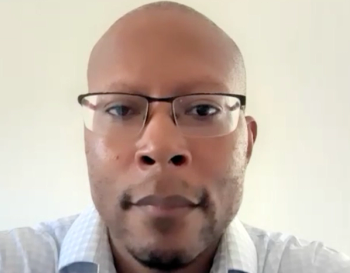
Tycel Phillips, MD, highlighted the need for new therapies for patients with MCL who have experienced relapse on previous lines of treatment.

Tycel Phillips, MD, spoke about the impact the glofitamab CRL had on the landscape of bispecifics in lymphoma.

Peter Martin, MD, discusses the complexities of treating relapsed MCL after treatment with a BTK inhibitor.

Panelists discuss how to manage slow FLAIR progression by initiating IDH inhibitor therapy, emphasizing the importance of setting patient expectations about tumor volume reduction and addressing special considerations for patients of childbearing age.

Panelists discuss how to counsel a 38-year-old patient with excellent surgical outcome about treatment options, weighing the benefits of early IDH inhibitor therapy against watchful waiting while considering individual patient factors and goals.

Peter Martin, MD, discusses the shifting paradigm for treating fit, transplant-eligible patients with MCL.

Historical standards for H3 K27M–mutant diffuse midline glioma treatment may harm healthy central nervous system cells, according to Ashley L. Sumrall, MD.
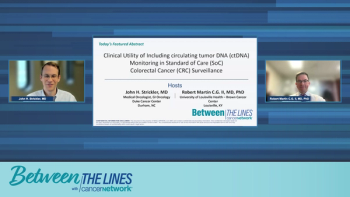
Experts discuss how initial postoperative visits after colorectal cancer surgery integrate pathology review, recurrence risk assessment, and timely ctDNA testing to personalize prognosis and guide surveillance, emphasizing the importance of surgical quality indicators and molecular tools in shaping follow-up care.

Experts discuss how postsurgical surveillance for colorectal cancer varies by setting, with multidisciplinary teams leading coordinated care in academic centers, whereas surgeons in rural or resource-limited areas often take on expanded roles to ensure follow-up and monitoring are not compromised.

Panelists discuss how patients typically respond well to chimeric antigen receptor (CAR) T-cell therapy with manageable adverse effects (AEs), including expected cytokine release syndrome (CRS) presenting as fever, whereas rare neurotoxicity is closely monitored through frequent cognitive testing and treated with steroids and late immune system effects like urinary tract infections (UTIs), respiratory infections, and shingles occur in the first 6 months post treatment but resolve with appropriate medications and prophylactic treatments, with outcomes improving significantly when CAR T is used earlier in treatment lines rather than after patients have exhausted all other options.
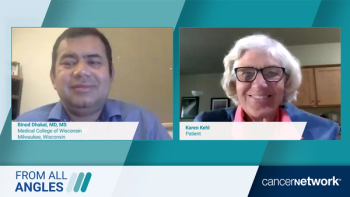
Panelists discuss how patients with multiple myeloma can achieve excellent quality of life with bispecific therapies like talquetamab despite manageable adverse effects, with Karen sharing her advice to embrace treatment opportunities, accept a "new normal," and focus on the meaningful life experiences these innovative therapies enable, including her recent trip to Italy and time with 6 grandchildren she wouldn't have met without these advancing treatments.

Panelists discuss how nursing support for chimeric antigen receptor (CAR) T-cell therapy success involves providing comprehensive educational materials covering everything from collection to survivorship, conducting virtual CAR T classes, and adapting to new outpatient CAR T protocols where patients receive cells and go home with vital sign monitoring equipment for caregivers. The panelists also celebrate recent FDA regulatory changes that reduced required stay times from 4 weeks to 2 weeks and driving restrictions from 8 weeks to 2 weeks, making CAR T therapy more accessible by allowing patients to return to work and normal life sooner, with reduced financial burden on families.

Dordaviprone was recommended at a dose of 625 mg orally once weekly for adults, and the recommended dosage is based on body weight for pediatric patients.

Extended follow-up for individuals with H3K27M-mutated diffuse midline glioma may help explain the duration of response across patient subgroups.

An expert discusses that combining the bispecific antibodies teclistamab and talquetamab has shown promising efficacy and manageable toxicity in heavily pretreated multiple myeloma patients—including those with extramedullary disease—offering a compelling dual-targeted option for high-risk cases while allowing flexibility in sequencing for slower-progressing disease.
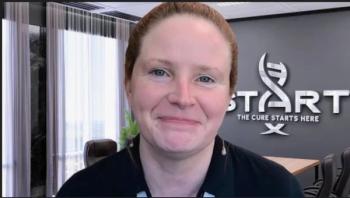
Geraldine O’Sullivan Coyne, MD, PhD, MRCPI, described the excitement of seeing novel molecules such as antibody-drug conjugates become more prominent.
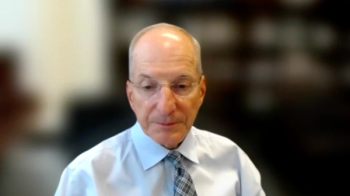
Ronald Bleday, MD, credits a chronic pain clinic for consulting patients who may be at a greater risk for prolonged opioid use following surgery.

Panelists discuss how voracidinib shows superior brain penetration compared to other IDH inhibitors and explore exciting combination approaches with immunotherapy and vaccines that target the immunosuppressive effects of 2-HG in the tumor microenvironment.

The primary end points of the EPCORE FL-1 trial were met while assessing an epcoritamab-based combination for patients with R/R follicular lymphoma.

Panelists discuss how to implement hepatotoxicity monitoring protocols, counsel patients about avoiding hepatotoxic substances, and manage the infrequent but manageable liver enzyme elevations that typically occur within the first 6 months of treatment.
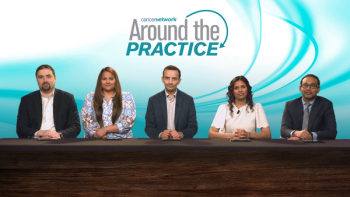
Panelists discuss how their key takeaways emphasize the importance of communication and collaboration between academic centers and community practices to ensure equitable access to bispecific therapies, highlighting that it’s an exciting time in myeloma treatment with patient-friendly options that can be administered closer to home, and concluding that virtually no patient should be denied exposure to bispecific therapy before discontinuing treatment, while anticipating that de-escalated Q4 weekly schedules and trispecific agents will transform current practice patterns in the coming years.
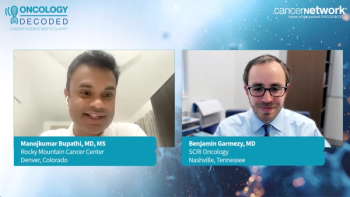
Oncology Decoded provides the current management of metastatic bladder cancer, recent advancements in systemic therapy, patient selection, and AE mitigation.

Ronald Bleday, MD, stated that before standardizing a stepwise approach to treating surgical pain, providers might have overtreated patients with opioids.

Panelists discuss how comprehensive supportive care strategies for GPRC5D bispecifics like talquetamab involve managing unique toxicities including taste and smell changes, skin and nail effects, and gastrointestinal issues, with one patient emphasizing her philosophy of addressing adverse effects as they arise rather than anticipating them, while highlighting the importance of continued research funding for innovative treatments that have extended her survival beyond initial prognosis.

Panelists discuss how shared clinical decision-making in chimeric antigen receptor (CAR) T-cell therapy involves seamless coordination between physicians and nurse coordinators who streamline the referral process for patients after first-line therapy failure, with coordinators managing logistics like condensing multiple appointments, arranging travel and lodging benefits through CAR T companies for out-of-state patients, providing clear communication in “nurse talk” rather than medical jargon, and emphasizing that the referral process is straightforward—encouraging oncologists not to wait but to send patients immediately after 1 line of therapy so the team can handle insurance approval and T-cell collection while patients return home during the 4- to 8-week manufacturing period.

Panelists discuss how patients with relapsed/refractory (R/R) multiple myeloma experience the challenging process of confirming disease recurrence through bone marrow biopsies and PET scans, often struggling with difficult treatment regimens like immunotherapy and daily lenalidomide (Revlimid) that cause severe illness, leading patients to advocate for themselves by researching alternative therapies like chimeric antigen receptor (CAR) T-cell therapy through educational materials and videos, ultimately seeking second-line treatments that offer the appeal of “one and done” therapy with less ongoing chemotherapy compared with traditional lifelong treatment approaches.